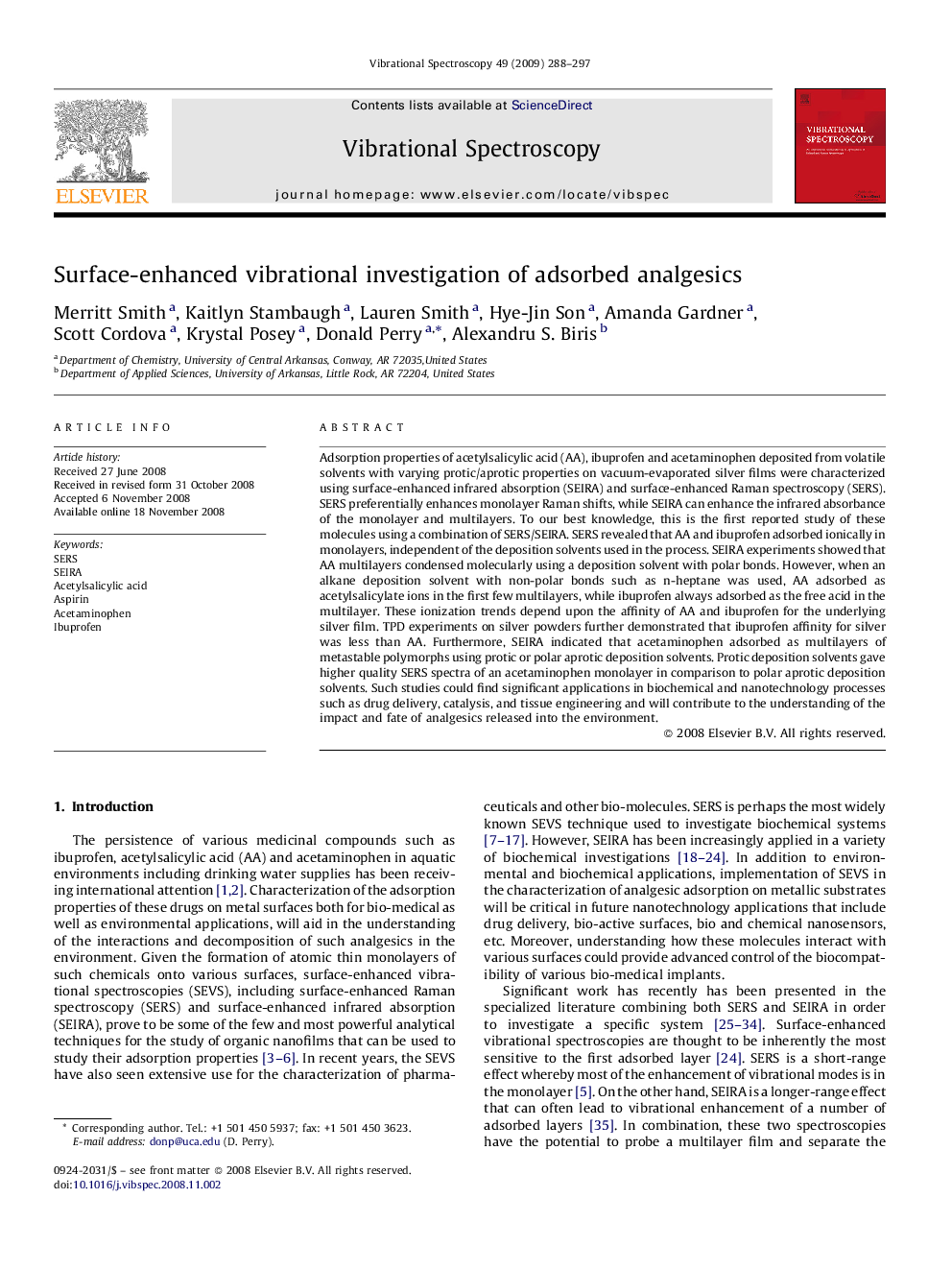| Article ID | Journal | Published Year | Pages | File Type |
|---|---|---|---|---|
| 1250350 | Vibrational Spectroscopy | 2009 | 10 Pages |
Adsorption properties of acetylsalicylic acid (AA), ibuprofen and acetaminophen deposited from volatile solvents with varying protic/aprotic properties on vacuum-evaporated silver films were characterized using surface-enhanced infrared absorption (SEIRA) and surface-enhanced Raman spectroscopy (SERS). SERS preferentially enhances monolayer Raman shifts, while SEIRA can enhance the infrared absorbance of the monolayer and multilayers. To our best knowledge, this is the first reported study of these molecules using a combination of SERS/SEIRA. SERS revealed that AA and ibuprofen adsorbed ionically in monolayers, independent of the deposition solvents used in the process. SEIRA experiments showed that AA multilayers condensed molecularly using a deposition solvent with polar bonds. However, when an alkane deposition solvent with non-polar bonds such as n-heptane was used, AA adsorbed as acetylsalicylate ions in the first few multilayers, while ibuprofen always adsorbed as the free acid in the multilayer. These ionization trends depend upon the affinity of AA and ibuprofen for the underlying silver film. TPD experiments on silver powders further demonstrated that ibuprofen affinity for silver was less than AA. Furthermore, SEIRA indicated that acetaminophen adsorbed as multilayers of metastable polymorphs using protic or polar aprotic deposition solvents. Protic deposition solvents gave higher quality SERS spectra of an acetaminophen monolayer in comparison to polar aprotic deposition solvents. Such studies could find significant applications in biochemical and nanotechnology processes such as drug delivery, catalysis, and tissue engineering and will contribute to the understanding of the impact and fate of analgesics released into the environment.
